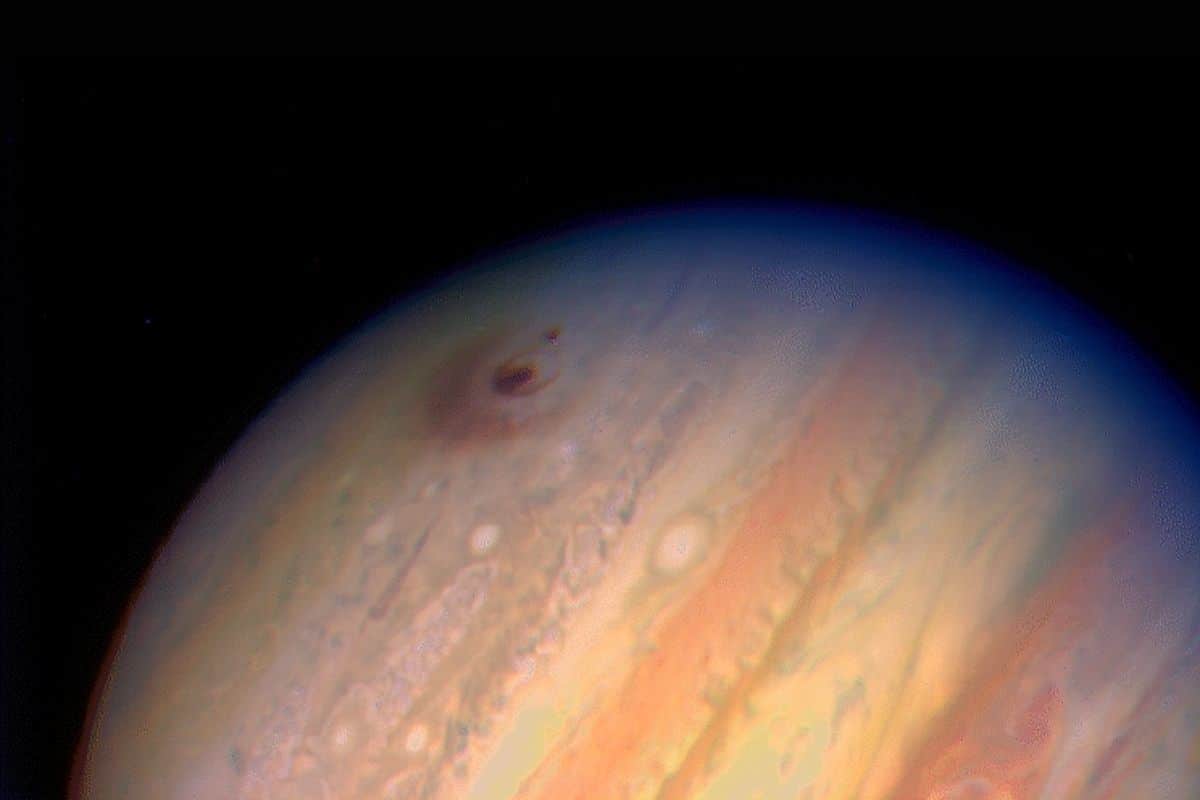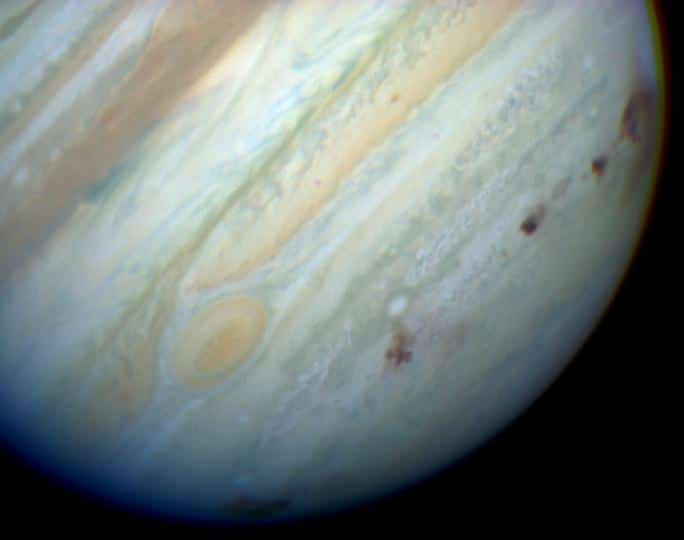

65 million years ago, a large asteroid hit Earth and the dinosaurs died out. But how realistic is the screenplay in the movie ‘Don’t Look Up?’
We can answer that question briefly: not very unrealistic. In fact, in 1994, Jupiter was hit by 21 fragments of comet Shoemaker-Levy 9. The largest fragment was two kilometers in diameter.
The comet was discovered in 1993 by Eugene Shoemaker, astronomer David Levy and Carolyn Shoemaker. Carolyn, Eugene’s wife, had a special gift. She easily detected small differences between two space photos taken in close succession. This enabled her to discover the comet. The comet had already broken up when it was discovered. This happened a year before, when the comet entered the Roche limit from Jupiter. The distance to the planet was then so small that the comet was pulled apart by the tidal forces of Jupiter. Before this disintegration, the comet had a diameter of about five kilometers.
Two years later — from July 16 to 24, 1994 — the comet’s debris fell into Jupiter’s atmosphere at a speed of 60 kilometers per second. A heavy bombardment, in which gigantic fireballs arose in the Jovian atmosphere. These fireballs had a peak temperature of more than 23,000 degrees Celsius, while it is normally freezing cold (-143 degrees Celsius) in the cloud tops of the giant planet. The heaviest impact released an energy of 6,000,000 megatons of TNT. That is 600 times the energy released if we fired all nuclear weapons at the same time. The following days, a trace of damage was visible.

This week’s space photo shows the impact site of the large fragment G. This scar on Jupiter here measured 12,000 kilometers, which is about the same width as the diameter of the Earth. The dark spot remained visible on Jupiter for months. The photo below was taken by the Hubble telescope.

The good news is that Jupiter is a much larger planet than Earth and is therefore more likely to attract comets and asteroids. In addition, Jupiter is closer to the asteroid belt. Although the chance of a large meteorite impact is much smaller than in the early days of the solar system, the impact of Shoemaker-Levy 9 shows that it is not inconceivable that our planet will be hit by a (relatively) large asteroid or meteorite in the future.
The quest for Earth-shapers
Fortunately, in 1998 the American space agency started the hunt for near-Earth planets, or asteroids that – at some point – come close to Earth. More than 18,000 near-Earth objects have already been mapped.
In discovering near-Earth objects, researchers have a clear goal in mind: to identify asteroids that could pose a threat to Earth in good time. In theory, there are several ways we can make a space rock heading toward Earth change course, but each of those ways requires us to see the rock coming well in advance.